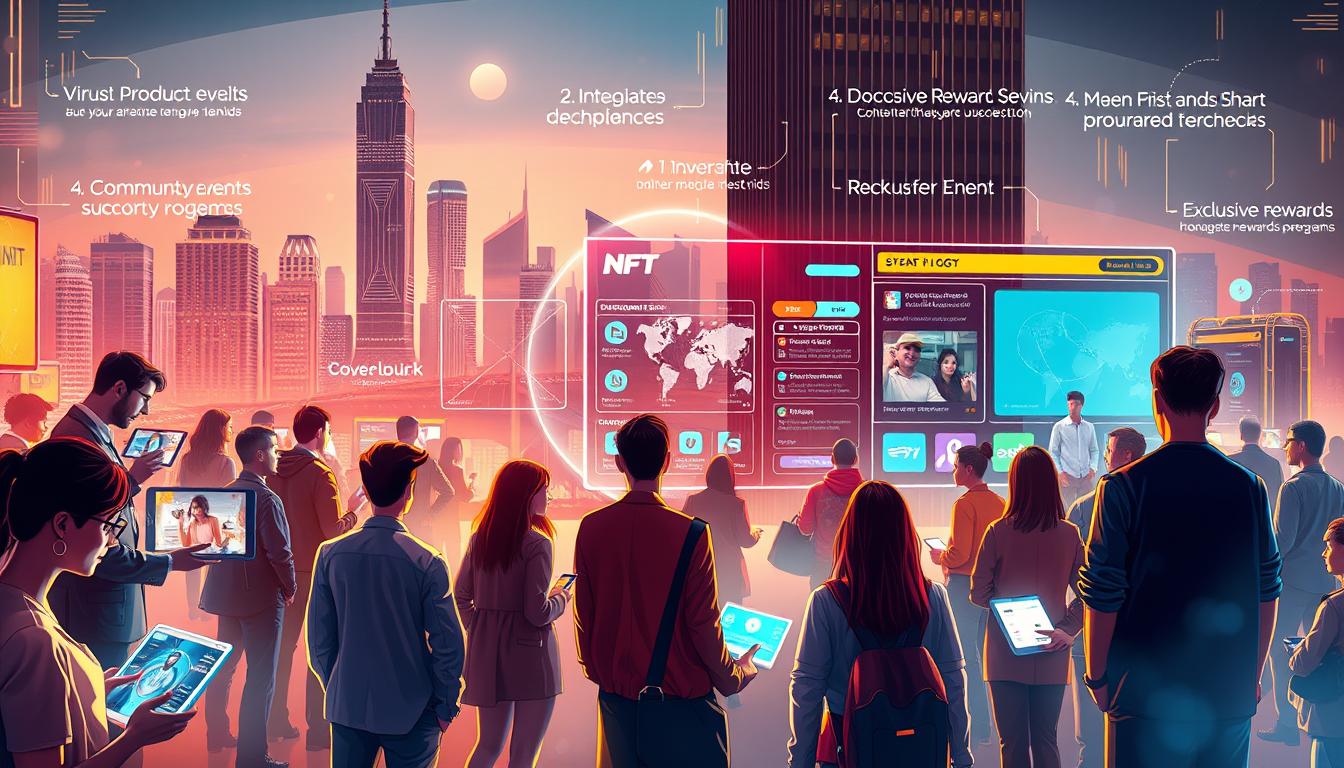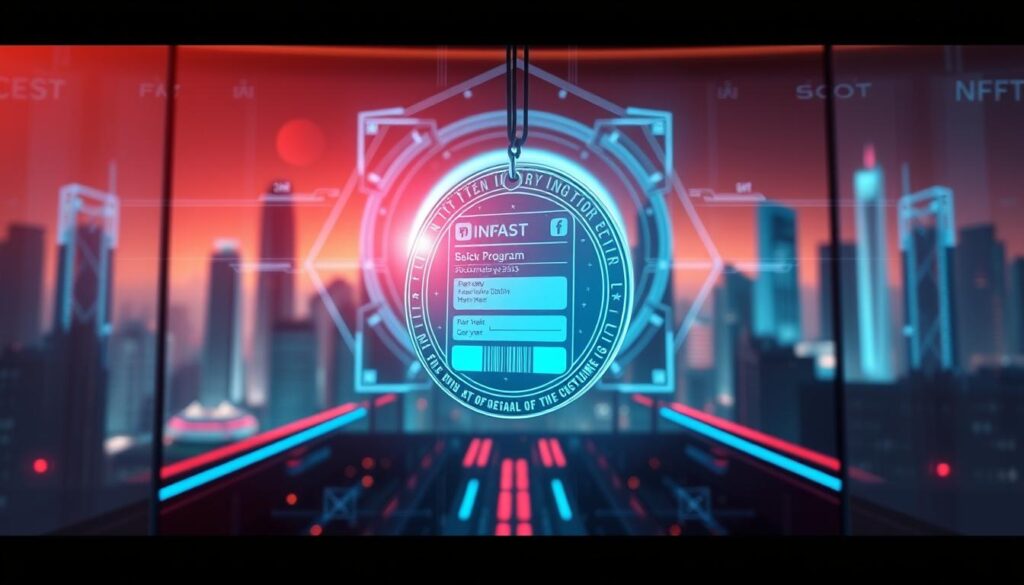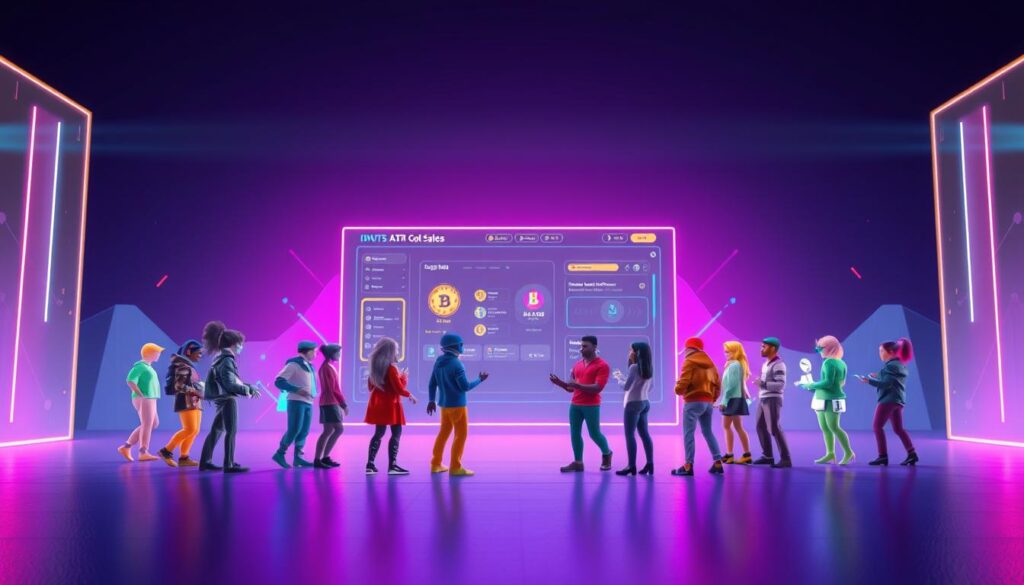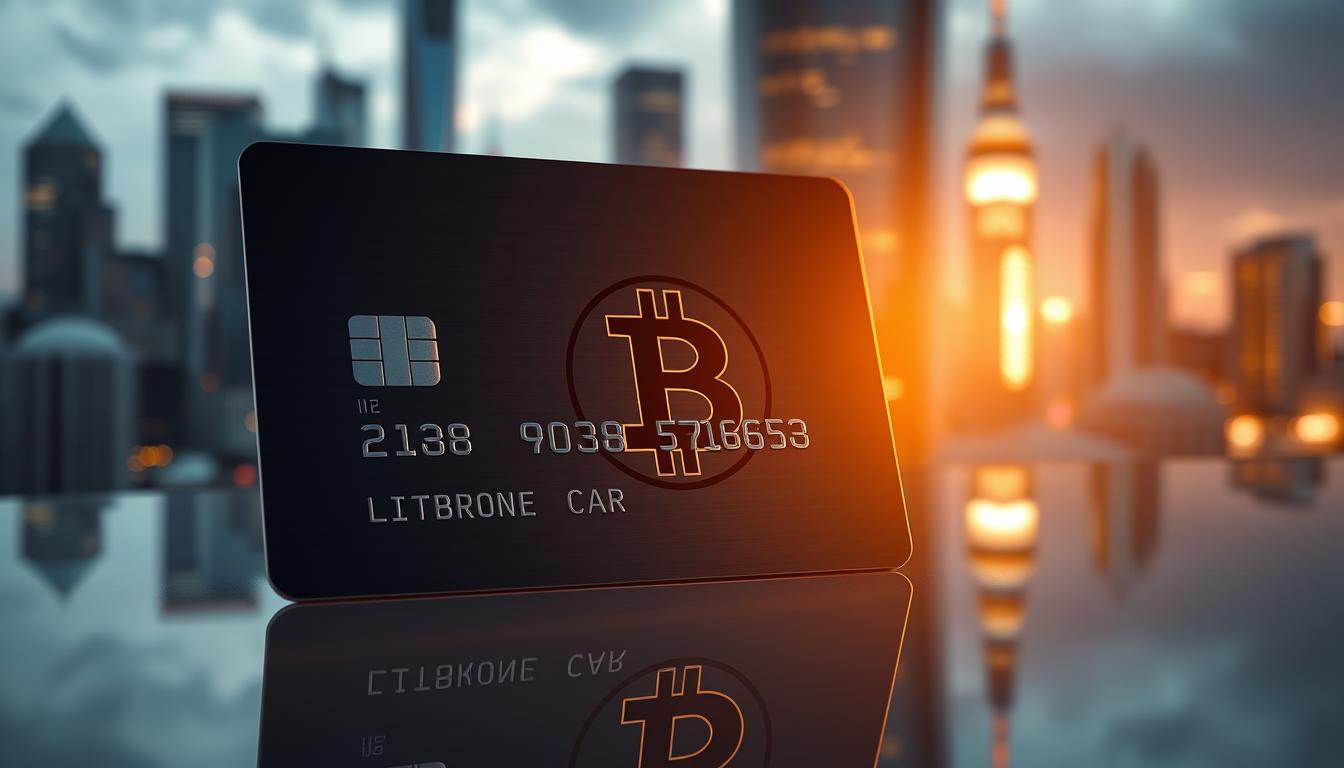Now Reading: Effective NFT Customer Retention Strategies for Brands
- 01
Effective NFT Customer Retention Strategies for Brands
Effective NFT Customer Retention Strategies for Brands

Digital collectibles have moved from hype to real tools that deepen loyalty and drive measurable value. Early drops focused on scarcity, but companies quickly learned that scarcity alone fell short.
Today, programmable tokens grant on-chain perks like early access, event passes, and social donations. Smart contracts create tamper-resistant rules that make benefits clear and redeemable.
Major experiments — Starbucks Odyssey, Prada Timecapsule, Clinique contests, Lacoste community drops, Asics 3D shoes, Lamborghini tokens — show repeatable patterns. Starbucks’ first stamps even generated strong trading volume, signaling market interest in on-chain loyalty.
This guide is a practical playbook. Expect plain-English definitions, customer-centered design tips, tactical steps before minting, and ways to measure real engagement and long-term value.
Key Takeaways
- Tokens can turn collectors into loyal supporters when paired with real rewards.
- Smart contracts ensure clear rules for issuance and redemption.
- Early brand pilots reveal utility beats pure scarcity.
- Focus on privacy, simplicity, and status to win users.
- Measure engagement and value, not short-term price moves.
Why NFTs matter now for loyalty and retention
What started as collectible art has evolved into a practical digital layer that helps companies deliver exclusivity, status, and measurable value. After the 2021–2022 boom, sales volume dropped roughly 77% and many top collections fell sharply. That reset forced businesses to rethink whether tokens should be a speculative play or a utility tied to real outcomes.
Today’s focus is on business impact: higher repeat purchase, better program participation, and richer first-party data. Privacy-centric wallet connections support consented data sharing, while on-chain records make fulfillment and verification transparent.

Market realities shape customer expectations. When people receive clear, usable benefits — access to drops, event admission, or exclusive experiences — engagement holds. Treat activations like other marketing efforts: set objectives, test, measure, and iterate.
Opportunities exist to layer token-gated access onto existing loyalty programs, creating a steady retention flywheel. For practical examples and program ideas, see digital product guides.
NFTs and loyalty in plain English
At their simplest, non-fungible tokens are one-of-a-kind digital records that prove ownership and unlock perks. They live on a blockchain, where each item is cryptographically signed, transparent, and traceable.
Non-fungible tokens as verifiable, programmable ownership
Think of an nft as a digital certificate stored in a public wallet. That wallet shows what a person holds without forcing them to share private details.
Smart contracts embed rules that control who can hold or transfer a token, what rewards it unlocks, and how royalties or donations flow. That makes benefit delivery predictable and auditable.

Unlike fungible points, which are generic and centrally managed, nfts are unique and portable. A token can change appearance as milestones are hit or flip its status after redemption to prevent reuse.
- Clear ownership: verifiable on chain, reducing fraud.
- Privacy-friendly: wallets confirm holdings without personal data exchange.
- Programmable perks: automated rules make loyalty delivery auditable.
These features explain why nfts matter to loyalty programs: they build trust, simplify verification, and let companies design evolving, meaningful benefits that move beyond simple points.
Designing for what customers actually want
Design must start with what people actually want: privacy, simple flows, and meaningful perks. User research shows most customers value control over data, low-friction access, and shareable moments that feel worth their time.

Privacy and user-controlled data in wallet-based experiences
Let wallets do the proofing, not long forms. Build around wallet-based privacy so customers decide when and how to share. That approach reduces friction and lets your brand gather first-party signals responsibly.
Ease-of-use: low-friction earning and redemption flows
Keep onboarding short: QR scans, clear prompts, and plain language like “we’ll issue you a token.” Simple steps make nft participation feel as easy as tapping a card or scanning a code.
Exclusivity and status through token-gated access
Use token-gated access to create real status: private channels, backstage entry, or limited drops tied to meaningful tiers rather than random scarcity.
Novel, shareable experiences for Gen Z and Millennials
- Useful rewards—member trials, surprise upgrades, or evolving utilities.
- Shareable moments—on-chain badges, digital postcards, and collaborative challenges.
- Plain language—avoid jargon so users adopt quickly.
Set the strategy before you mint
Plan objectives and audience segments first, then design token utilities around them. Start with clear goals such as higher repeat rate, frequency, or average order value. Define which user groups are most likely to respond to a loyalty-style value exchange.
Map utility to journeys by matching benefits to behavior. Offer early access to encourage trials. Use exclusive content and event admission to reward advocacy and attendance. Make each token unlock obvious, repeatable reasons to engage.

Pilot scope and governance
Run a pilot that is large enough to teach but small enough to control. Set timelines, success metrics, and a clear scale path if targets are met.
Governance matters: decide who approves changes, how royalties or donations flow, and how tokens will be upgraded or sunset. Align partners—marketplaces, artists, and nonprofits—so fulfillment and storytelling stay consistent.
Quick reference: design checklist
| Focus | Action | Success Metric |
|---|---|---|
| Objectives | Set repeat rate, frequency, and AOV targets | Lift in repeat purchases (%) |
| Segments | Identify high-propensity groups | Engagement rate in cohort (%) |
| Utility | Map benefits to journey: access, content, events | Redemption and attendance rate |
| Pilot & Governance | Define scope, approvals, partner roles | Time to insight and partner NPS |
NFT customer retention strategies for brands
When digital ownership links to real-world access, it becomes a reliable lever for ongoing engagement. Practical designs focus on simple benefits that are easy to explain and redeem.
Token-gated communities
Stand up safe, member-only spaces with Q&A sessions, exclusive content, and moderated forums. Token gating creates a tested channel for long-term engagement.
Utility tokens: early access and events
Issue utility tokens that grant early access to limited products, guaranteed event admission, or exclusive content. Clear rewards make the value immediate and measurable.
Digital twins and limited drops
Link physical products to on-chain ownership to prove authenticity, support resale transparency, and deliver post-purchase perks like warranty or upgrades.
Lightweight loyalty formats
- Collectible stamps and digital postcards for low-friction participation.
- Access passes that redeem via QR at events or pop-ups.
Impact and reinvestment
Launch social impact tokens that automate verified donations and use programmable royalties to fund member rewards or surprise upgrades.
Personalized membership tokens
Experiment with evolving PFPs and tiered tokens whose visuals and benefits change as members progress. Personalization increases long-term engagement.
How to implement: a step-by-step playbook
Start implementation by mapping technical choices to clear business goals and user flows. This keeps fees, speed, and UX aligned with the loyalty outcomes you want.
Select chains and Layer 2s
Evaluate Ethereum with Layer 2s (Polygon, Arbitrum, Optimism) for reach and lower fees. Consider Solana for throughput, Tezos for energy efficiency, or BNB Chain for low cost.
Choose marketplaces and custody
Match platforms to audience: OpenSea for scale, Rarible for customization, curated markets for premium drops. Decide if custodial wallets ease onboarding or if non-custodial access fits your privacy goals.
Design smart contracts and CX
Define earning rules, redemption mechanics, transfer permissions, and royalty splits. Audit contracts and build simple wallet/QR redemption flows with clear, jargon-free support.
Pilot, measure, iterate
Start with a limited cohort. Track engagement, redemptions, and benefits use. Iterate before wider rollout.
| Decision | Options | Key metric |
|---|---|---|
| Blockchain | Ethereum + L2, Polygon, Solana, Tezos, BNB | Transaction cost & latency |
| Marketplace | OpenSea, Rarible, curated platforms, Mintable | Audience fit & conversion |
| Smart contract | Earning, redemption, transfer, royalties | Audit pass rate & error-free redemptions |
| CX | Wallets, QR redemption, support flows | Onboarding completion & help tickets |
For practical templates and pilot checklists, see our guides for businesses.
Choosing platforms: blockchains and marketplaces that work for business
Picking the right chain and marketplace shapes costs, speed, and who sees your drops. Match technical trade-offs to business goals: audience reach, fee sensitivity, and sustainability posture.
Evaluating major chains
Ethereum gives mature tooling and robust smart contracts. Use Layer 2s like Polygon, Arbitrum, or Optimism to cut fees and keep UX smooth.
Polygon delivers very low fees and broad compatibility. It fits when cost per mint matters most.
Solana offers high throughput and low latency, ideal for fast-drop experiences and heavy on-chain interactions.
Tezos stands out for energy efficiency and a self-amending protocol, which appeals to sustainability-minded teams.
BNB Chain balances speed and low transaction cost for high-volume needs.
Marketplace fit and positioning
OpenSea supports multiple chains and has the largest user base, helping discovery and liquidity. Rarible supports Ethereum, Flow, Tezos, and Polygon and adds decentralized governance plus customizable storefronts.
Curated venues like SuperRare and Foundation reinforce premium perception, while Mintable offers gasless minting to ease onboarding.
- Align platform choice with audience reach and fee tolerance.
- Prioritize marketplaces that match your brand positioning and discovery needs.
- Plan for portability so users can hold their nft across ecosystems without losing loyalty utilities into the future.
| Option | Strength | When to pick |
|---|---|---|
| Ethereum + L2s | Robust tooling, smart contract flexibility | Complex benefits, large integrations |
| Polygon | Very low fees, broad support | Cost-sensitive loyalty drops |
| Solana | High throughput, low latency | Fast minting or high-frequency interactions |
| Tezos | Energy-efficient, stable upgrades | Sustainability-focused programs |
| BNB Chain | Fast, low-cost transactions | High-volume or budget-conscious pilots |
For a practical how-to on linking tokens to ongoing loyalty, see how to create an nft loyalty. Choose platforms that keep benefits easy to claim and that scale with your customers.
Industry playbooks and proven brand use cases
Across retail, travel, and media, pilots show repeatable patterns that convert digital ownership into real-world value.
Retail and CPG examples
Early access and exclusive drops are common. Prada’s Timecapsule released monthly shirts tied to tokens that unlock future perks.
Clinique used contest-based tokens to grant early access and even annual product rewards over a decade. Gap Threads and Lacoste have run tiered drops that tie collectibles to merchandise.
Travel and hospitality concepts
Property-specific tokens can record stays, grant upgrade rights, and deliver digital postcards. QR-based passes keep redemption simple at check-in and on-property experiences.
Entertainment and media plays
Fan tokens enable exclusive content, narrative participation, and IRL meetups. Warner Bros. and Paramount used fan drops to deepen engagement and create events that reward repeat fans.
- Retail: authenticated collectibles that translate to tangible rewards.
- Travel: stay-linked tokens that unlock upgrades and curated experiences.
- Media: content-driven tokens that boost loyalty and event attendance.
| Sector | Use case | Example |
|---|---|---|
| Retail & CPG | Early access, authenticated collectibles | Prada, Clinique, Asics |
| Travel | Stay records, upgrades, QR passes | Property tokens concept |
| Entertainment | Fan content, meetups, narrative drops | Warner Bros., Paramount |
Illustrative results: Starbucks Odyssey stamps traded actively while creating access perks. Asics linked 3D files to tokenized shoes to support artists and extend product stories.
Measurement that proves value
Good measurement turns blockchain transparency into actionable program insights. Public ledgers let teams trace activity and transfers in real time. That makes it simple to evaluate whether a drop or perk truly moves the needle.
KPIs across acquisition, engagement, redemption, and retention
Define clear funnel metrics and tie them to business goals. Typical KPIs include acquisition cost per wallet onboarded, engagement rates in token-gated channels, redemption rates, and uplift versus a control group.
On-chain analytics, first-party data, and community health
Use on-chain signals to segment holders by activity and tenure. Then merge consented first-party data to understand which benefit bundles drive purchases or upgrades.
Testing mechanics: scarcity, tiers, and benefit bundles
Run A/B tests on scarcity levels, tier thresholds, and bundles to balance perceived value and operational cost. Track post-redemption behavior to see which rewards spur repeat orders or higher lifetime value.
- Define KPIs: acquisition cost, engagement, redemption, lift vs. control.
- Segment holders: active vs. dormant, tenure, and spend patterns.
- Test mechanics: scarcity, tiers, and bundles with controlled experiments.
- Monitor health: participation, sentiment, and secondary market activity.
| Metric | What it shows | How to collect | Target example |
|---|---|---|---|
| Cost per wallet | Efficiency of acquisition | Marketing spend / onboarded wallets | $15–$40 |
| Engagement rate | Active participation in gated channels | On-chain transfers + platform activity | 30%+ monthly |
| Redemption rate | Which rewards get used | Redemption events tied to wallet IDs | 20%–50% |
| Retention lift | Repeat purchase attributable to program | Compare cohort vs. control | 5%–15% uplift |
Blockchain transparency helped Starbucks Odyssey show market interest through trading volume. Use that model: pair wallet signals with first-party data, then iterate. For examples on integrating tokens into loyalty programs, see how brands use nfts for loyalty.
Risks, compliance, and sustainability you can’t ignore
Every token pilot brings trade-offs: technical integration, shifting regulation, and environmental impact all demand planning before launch.
Technical complexity and integration planning
Plan integrations across identity, ecommerce, and CRM early. Budget for audits, custody choices, and ongoing maintenance.
Design fallback flows to handle lost access, device changes, or recovery while protecting privacy and security.
Legal, tax, and regulatory considerations
Consult legal and tax experts to address disclosures, consumer protections, and royalty accounting. Regulation is evolving; document decisions and reporting rules.
Environmental impact and energy-efficient chains
Prefer energy-efficient technologies such as Ethereum’s PoS or Tezos to reduce emissions. Communicate that choice to users as part of sustainability commitments.
Customer education and plain language
Use jargon-free wording like “issuing a token” instead of technical terms. Provide step-by-step guides that explain how to claim rewards and use benefits.
| Risk Area | Action | Outcome |
|---|---|---|
| Systems integration | Map identity, CRM, ecommerce; budget audits | Reliable redemptions and lower ops friction |
| Regulatory | Legal & tax review; clear disclosures | Compliance and predictable reporting |
| Sustainability | Pick PoS or low-energy chains; communicate choice | Reduced footprint and better public perception |
| Support & education | Plain-language guides and recovery flows | Higher engagement and fewer help tickets |
Bringing it all together for long-term loyalty impact
, Durable engagement grows from predictable access, plain-language rules, and steady content cadence.
Design programs that pair privacy-first flows with easy claiming and token-gated utilities. Proven pilots from Starbucks, Prada, and Clinique show that clear, repeatable rewards drive real customer engagement and customer loyalty.
Start small: test a focused pilot, measure uplift in engagement and redemption, then scale benefits and communities based on results. Evolve tiers, content cadence, and access as your community matures while keeping novelty and reliability in balance.
Maintain legal, technical, and sustainability standards and keep education simple. The future blends ownable, portable on-chain utilities with familiar loyalty mechanics to turn early opportunities into sustained business value.
FAQ
Q: What makes token-based rewards valuable for loyalty programs now?
A: These verifiable digital items create clear ownership and transfer rules on a blockchain, which lets companies deliver exclusive access, early product drops, and proven scarcity. That mix of utility and collectible appeal drives repeat visits, deeper community ties, and measurable business outcomes like spend uplift and longer membership lifecycles.
Q: How do verifiable tokens differ from traditional points or coupons?
A: Unlike centralized points, tokens are portable and can carry programmable rules: gated access, royalty flows, and time-bound perks. Brands can reward ownership with experiences or digital twins linked to physical products, while members gain transparent proof of entitlement and resale options that add real-world value.
Q: What should brands define before launching a mint or drop?
A: Start with clear objectives, target segments, and the specific value exchange: what owners receive, how long benefits last, and redemption mechanics. Also map governance, pilot scope, partner roles, and legal guardrails so the initiative is scalable and compliant before you issue any tokens.
Q: Which utility patterns work best to increase loyalty and engagement?
A: Early access, token-gated communities, event admission, evolving membership tokens (PFPs), and lightweight loyalty items like digital stamps all perform well. Each offers repeated moments of interaction—content releases, member-only drops, and on-chain proof of participation—that keep people involved beyond a single purchase.
Q: How do you keep wallet-based experiences private and easy to use?
A: Prioritize noncustodial choices with clear consented data flows and limit on-chain personal data. Offer simple wallet onboarding, social-wallet links or custodial options for mainstream users, and frictionless redemption via QR codes or email links to bridge crypto-native and mainstream audiences.
Q: What blockchains and marketplaces should companies evaluate?
A: Consider trade-offs: Ethereum and Polygon for ecosystem reach, Solana and Tezos for lower fees and speed, and BNB Chain for cost efficiency. For marketplaces, weigh broad platforms like OpenSea against curated or vertical options that match your brand safety and collector expectations.
Q: How do brands measure whether token programs actually boost loyalty?
A: Track acquisition, engagement, redemption rates, repeat purchase lift, and community health metrics. Combine on-chain analytics (ownership transfers, active wallets) with first-party data (LTV, churn) to link token participation directly to revenue and retention trends.
Q: What legal and sustainability risks should be addressed up front?
A: Consult counsel on securities, tax, and consumer-protection rules for digital assets. Choose energy-efficient chains or Layer 2s to reduce environmental impact. Document terms of sale, transferability, and dispute resolution to avoid regulatory and reputational issues.
Q: Can brands pilot with a small cohort before a full rollout?
A: Yes. Run a controlled pilot to test mint mechanics, partner integrations, support workflows, and user education. Use a tight cohort to validate value propositions and iterate UX before scaling supply or opening secondary markets.
Q: How do charitable or social-impact tokens work within loyalty initiatives?
A: Impact tokens can automate donations or allocate a portion of secondary sales to causes via smart contracts. This transparency builds trust, enables programmatic philanthropy, and aligns membership benefits with social values that many Gen Z and millennial customers prioritize.
Q: What customer experience elements drive adoption among mainstream audiences?
A: Clear, jargon-free explanations, guest checkout or custodial wallet options, easy redemption paths, and visible, immediate benefits. Pair technical elements with strong support and educational content to reduce anxiety and highlight tangible perks like discounts or event access.
Q: How do programmable royalties benefit member communities?
A: Royalties can funnel a percentage of secondary-market sales back into community rewards, funding future drops, member events, or exclusive content. That creates a sustainable economy where long-term holders gain ongoing value as the community grows.
Q: What role do digital twins and limited drops play in linking physical and digital ownership?
A: Digital twins authenticate physical items and enable hybrid experiences—repairs, upgrades, or exclusive access tied to ownership. Limited drops create urgency and status, encouraging earlier purchases and higher lifetime engagement when paired with meaningful utility.














